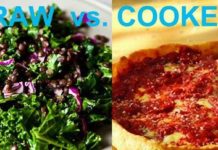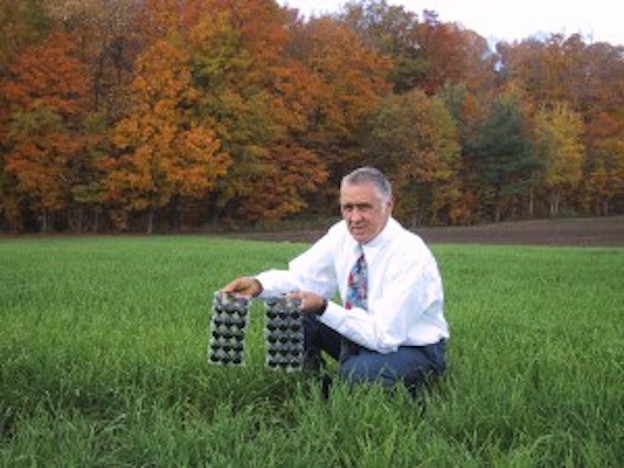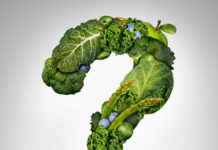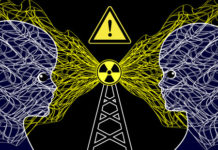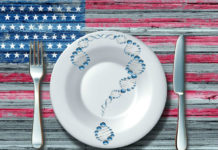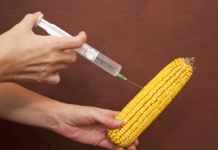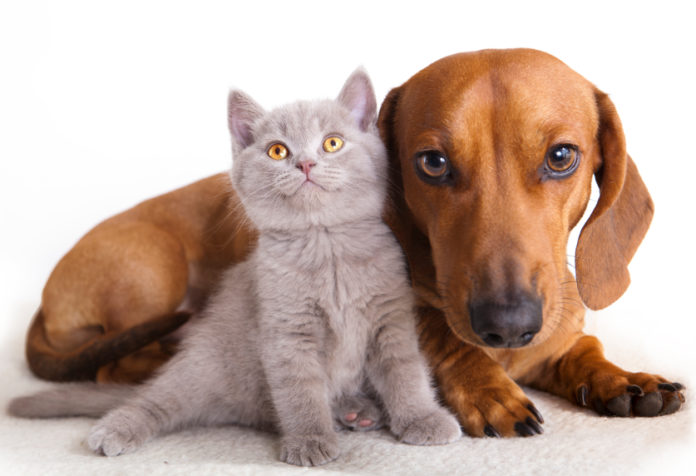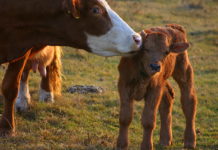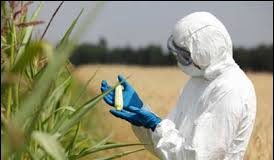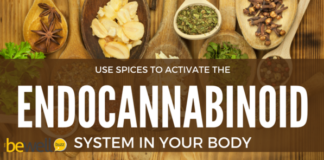WARNING
Do not read this article while eating your dinner or feeding your pet!
If you think your pet food really contains healthy ingredients like whole chicken, choice cuts of beef, fresh grains and all the nutrition your dog or cat will ever need … think again!
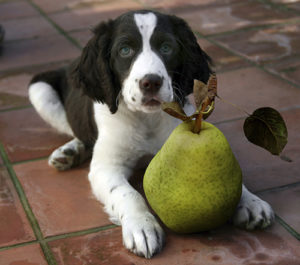 If you care at all for your beloved pets, please do not believe the ads from the $30 billion/year U.S. pet food industry when it comes to the health of your beloved pets. Rather than being designed scientifically to provide everything your pet needs for good health, as advertised, commercial pet food actually lacks sufficient minerals, enzymes and vitamins for good health – and often contain ingredients, food additives, pesticides and GMO’s actually harmful to pet health. Instead, discover raw pet food!
If you care at all for your beloved pets, please do not believe the ads from the $30 billion/year U.S. pet food industry when it comes to the health of your beloved pets. Rather than being designed scientifically to provide everything your pet needs for good health, as advertised, commercial pet food actually lacks sufficient minerals, enzymes and vitamins for good health – and often contain ingredients, food additives, pesticides and GMO’s actually harmful to pet health. Instead, discover raw pet food!
Basically, the pet food industry is in reality just an extension of the human food industry, and their products are often just as bad as fast food or processed foods — and often much worse! Pet food, from the corporate point of view, is just a place for slaughterhouse waste and grains considered “unfit for human consumption” to be turned into profits!
What you will probably find in commercial pet foods are the contaminated or condemned remains of animals – that means Dead, Dying, Diseased or Disabled livestock. They use absolutely ALL of these waste products, including tongues, esophagi, nails, claws, feathers, beaks, tendons, lungs with pneumonia and other diseased and cancerous meat – nothing goes to waste in the name of profit. You may even find blood and fecal wastes. These are all listed on the label as byproducts which are found in moist as well as dry pet foods.
Those nutritious-sounding “whole grains” used in pet foods are just a cheap filler. In addition to being hard to absorb in a carnivore’s digestive system, these grains are waste products, too, and have had the starch and oil removed for use in other products (usually by chemical processing) or they are the hulls and other remnants from the milling process. Some of the grains used may have been deemed unfit for human consumption because of mold, contaminants or poor storage practices.
Ingredients
 The protein in pet food comes from a variety of sources. When cattle, swine, chickens, lambs, or any number of other animals are slaughtered, the choice cuts such as lean muscle tissue are trimmed away from the carcass for human consumption. Whatever remains of the carcass — bones, blood, pus, intestines, ligaments, and almost all the other parts not generally consumed by humans — is used in pet food.
The protein in pet food comes from a variety of sources. When cattle, swine, chickens, lambs, or any number of other animals are slaughtered, the choice cuts such as lean muscle tissue are trimmed away from the carcass for human consumption. Whatever remains of the carcass — bones, blood, pus, intestines, ligaments, and almost all the other parts not generally consumed by humans — is used in pet food.
These “byproducts,” as they’re called on pet food labels, have no legal definition for what is required. Many of these remnants are indigestible and provide a questionable source of nutrition for animals. In addition, the amount of nutrition provided by byproducts can vary from vat to vat.
Another source of meat you won’t find mentioned on pet food labels are dogs and cats that have been put to sleep, dead zoo animals and roadkill. Once it is rendered, Protein is protein – right? Rendering is the process of melting animal carcasses in a huge vat to extract oil, fat, bone meal and meat. The high heat used in rendering is supposed to make all this toxic waste safe – but it doesn’t. Though some bacteria are destroyed initially, there is little attention to paid to the process afterwards, leaving a high probability of contamination later from contact with the raw material. The manufacturers are not required to test for re-contamination. They also don’t test for endotoxins – toxins released from a bacterium when it dies.
What can the feeding of such ingredients do to your companion animal? Some veterinarians claim that feeding slaughterhouse wastes to animals increases their risk of getting cancer and other degenerative diseases. For example, feeding byproducts of dead cows to live cows has been linked to mad cow disease. One factor is that the cooking methods used by pet food manufacturers and rendering plants can’t destroy the hormones used to fatten livestock, or medications, such as those used to treat diseased animals or those used to euthanize dogs and cats.
“There is virtually no information on the bio- availability of nutrients…in many of the dietary ingredients used in pet foods. These ingredients are generally byproducts of the meat, poultry and fishing industries, with the potential for a wide variation in nutrient composition. Claims of…the Association of American Feed Control Officials (AAFCO)…do not give assurances of nutritional adequacy …” –– James Morris, Quinton Rogers, Dept. of Molecular Biosciences, University of California at Davis Veterinary School of Medicine (2008)
Animal & Poultry Fat
You may notice a pungent odor when you open a container of pet food. What is the source of that delightful smell? It is refined animal fat, kitchen grease, and other oils too rancid or deemed inedible for humans, doctored up for the noses of your pets then added to the pet food.
Restaurant grease has been a major component of feed grade animal fat over fifteen years. This grease is held in fifty-gallon drums outside of restaurants for weeks, exposed to extreme temperatures with no regard for its future use. The next few times you dine out, be sure to look out back behind the restaurant for a container with a rendering company’s name on it. It is almost guaranteed that you will find one. Rendering companies pick up this rancid grease and mix the different types of fat together, stabilize them with powerful antioxidants to retard additional spoilage, and then sell the blended products to pet food companies. These fats are sprayed directly onto dried kibble or extruded pellets to make an otherwise bland or distasteful product palatable to your pet. The fat also acts as a binding agent to which manufacturers add other flavor enhancers as well. Pet food scientists have discovered that animals love the taste of these sprayed fats. Manufacturers are masters at getting a dog or a cat to eat something she would normally turn up her nose at.
Wheat, soy, corn, Peanuts Hulls & Other Vegetable Protein
The amount of grain used in pet food has risen over the last decade. Once considered filler by the pet food industry, grain products now make up a considerable portion of pet food. The availability of nutrients in grain products is dependent upon the digestibility of the grain. The amount and type of carbohydrate in pet food determines the amount of nutrient value the animal actually gets. Dogs and cats can almost completely absorb carbohydrates from some grains, such as white rice. Up to 20% of other grains can escape digestion. The availability of nutrients for wheat, beans, and oats is poor. The nutrients in potatoes and corn are far less available than those in rice. Carbohydrate that escapes digestion is of little nutritional value due to bacteria in the colon that ferment carbohydrates. Some ingredients, such as peanut hulls, are used strictly for “filler” and have no nutritional value at all!
Two of the top three ingredients in pet food are almost always some form of grain. But since cats and dogs are carnivores — they must eat meat to fulfill certain physiological needs. Why are we feeding a corn-based product to them? The answer is that corn is cheaper than meat.
In 1995 Nature’s Recipe pulled thousands of tons of dog food off the shelf after consumers complained that their dogs were vomiting and losing their appetite. Nature’s Recipe’s loss amounted to $20 million. The problem was a fungus that produced vomitoxin, an aflatoxin, which is a subset of mycotoxin, a poison given off by mold contaminated the wheat. Although it caused many dogs to vomit, stop eating and have diarrhea, vomitoxin is a milder toxin than most. The more virulent strains of mycotoxins can cause weight loss, liver damage, lameness, and even death. The Nature’s Recipe incident prompted the Food and Drug Administration (FDA) to intervene. Dina Butcher, Agriculture Policy Advisor for North Dakota Governor Ed Schafer, concluded that the discovery of vomitoxin in Nature’s Recipe wasn’t much of a threat to the human population because “the grain that would go into pet food is not a high quality grain. Which means that the grain used in pet food is not fit for human consumption and therefore not a threat to the human population.
Soy is another common ingredient sometimes used as filler in pet food. It adds bulk so that when an animal eats a product containing soy it will feel more satisfied. While soy has been linked to gas in some dogs, other dogs do quite well with it. Vegetarian dog foods use soy as a protein source. Industry critics note that many of the ingredients used as humectants — ingredients such as corn syrup and corn gluten meal which bind water to prevent oxidation — also bind the water in such a way that the food actually sticks to the colon and may cause blockage. The blockage of the colon may cause an increased risk of cancer of the colon or rectum.
Additives & Preservatives
Additives are used in commercial pet foods to improve stability or appearance, and of course provide no nutritional value. These include emulsifiers to prevent water and fat from separating, antioxidants to prevent fat from turning rancid and antimicrobials to reduce spoilage. Added color and flavor make the product more attractive to consumers and their pets.
Two-thirds of the pet food manufactured in the United States contains preservatives. In the remaining third, 90% includes ingredients already stabilized by synthetic preservatives. Premixed vitamin additives used to supplement pet food can also contain preservatives. This means that your pet may eat food with several types of preservatives that have been added at the rendering plant, the manufacturing plant and in the supplemental vitamins.
In the last 40 years, the number of food additives has greatly increased. Of the more than 8,600 recognized food additives today, no toxicity information is available for 46% of them. Cancer-causing agents are sometimes permitted if they are used at low enough levels. The risk of continued use at these cancer-causing agents has not been studied and the build up of these agents may be harmful. Ethoxyquin (EQ), for example, was found in dogs’ livers and tissues months after it had been removed from their diet, and as of July 31, 1997, the FDA’s Center for Veterinary Medicine requested that manufacturers reduce the maximum level for EQ be cut in half, to 75 parts per million.
Though the law requires studies of direct toxicity of additives and preservatives, most of them have not been tested for their combined effect after ingestion. Three commonly used preservatives, BHA, BHT, and EQ, have a proven synergistic effect that may lead to the development of certain types of cancer. Butylated hydroxyanisole (BHA) and butylated hydroxtoluene (BHT) are the most commonly used antioxidants in processed food for human consumption. For these antioxidants, there is little information documenting their toxicity or the safety of long-term use in pet food.
In animal feeds, the most commonly used antioxidant preservative is ethoxyquin. Some pet food critics and veterinarians claim ethoxyquin is a major cause of disease, skin problems, and infertility in dogs. Ethoxyquin is not approved for use as a preservative in human food.
Nitrate, also used in meat for human consumption. combines with bacteria, which changes it to another chemical form with carcinogenic properties called nitrosamines. Very small amounts of this chemical can cause acute and chronic liver damage.
“Natural preservatives” and antioxidants are like Vitamin C, Vitamin E, may seem better than chemical preservatives they may be less effective than chemical preservatives.
To make pet food nutritious, manufacturers “fortify” it with vitamins and minerals, which are also just more highly processed, hard to digest chemicals. They have to do this, however, because the other ingredients in the pet food basically have little or no nutrition left after processing.
The answer, of course, is to use fresh, whole raw foods that don’t need preservatives, that aren’t rancid and rendered, that aren’t made from by -products, and that are too disgusting to discuss during dinner!
Contaminants
Commercially manufactured or rendered meat meals are highly contaminated with bacteria because their source includes animals that have died because of disease, injury, or natural causes. These dead animal may not be rendered until days after death. Therefore the carcass is often contaminated with bacteria. While cooking may kill bacteria, it does not eliminate endotoxins that can cause disease. Pet food manufacturers do not test their products for endotoxins.
Escherichia coli (E Coli) is another bacteria that can be found in contaminated pet foods. E Coli bacteria, like Salmonella, can be destroyed by cooking at high temperatures, however, the endotoxin produced by the bacteria will remain.
Aflatoxin comes from mold or fungi. Improper drying and storage of crops causes mold growth, which results in Aflatoxin contamination. Ingredients that are most likely to be contaminated with this toxin are cottonseed meal, peanut meal, and fish meal.
Labeling
The National Research Council (NRC) of the Academy of Sciences set the nutritional standards for pet food until 1974, when the pet food industry created a group called the American Association of Feed Control Officials (AAFCO). At that time AAFCO chose to adopt the NRC standards rather than develop its own. The NRC standards required feeding trials for pet foods that claimed to be “complete” and “balanced.” The pet food industry found the feeding trials to be too restrictive, so AAFCO designed an alternate procedure for claiming the nutritional adequacy of pet food. Instead of feeding trials, chemical analysis would be done to determine if a food met or exceeded the NRC standards. But chemical analysis does not address the palatability, digestibility and biological availability of nutrients in pet food. So it is unreliable for determining whether a food will provide an animal with sufficient nutrition. To compensate for the limitations of chemical analysis, AAFCO added a “safety factor,” which was to exceed the minimum amount of nutrients required to meet the complete and balanced requirements. By establishing its own standards and disregarding the NRC standards, AAFCO established itself as the governing body for pet food. In essence the pet food industry developed its own standards for nutritional adequacy.
Genetically Modified Ingredients (GMOs)
Most pet foods on the market today are probably mostly made from corn products that are genetically modified (GMO) — the seeds genetically modified to produce plants that can withstand repeated spraying with Monsanto’s Roundup, a glyphosate-based weed killer demonstrated to have adverse health effects in animals!
Today, more than 90% of the corn grown in in the U.S. is genetically modified. Studies have shown that genetically modified corn causes significant kidney and liver disease in rats after only a 90-day feeding trial, and has a negative effect on the heart, spleen and other organs. A new lifetime study of rats fed GMO corn shows they died earlier than rats on a standard diet plus they developed tumors and severe kidney and liver damage as well. Half the male rats and 70 percent of females died prematurely, compared with 30 percent of males and 20 percent of females in the control group.
A 2009 article in the journal Critical Reviews in Food Science and Nutrition asserted that “The results of most of the rather few studies conducted with GM foods indicate that they may cause hepatic, pancreatic, renal, and reproductive effects and may alter hematological, biochemical, and immunologic parameters the significance of which remains unknown. The above results indicate that many GM foods have some common toxic effects.
The toxic insecticidal agent Bacillus thuringiensis is present in most GMO crops in the U.S. that wind up in animal feed and pet food. Glufosinate and glyphosate are herbicides, applied to millions of acres of genetically modified crops in the U.S. These herbicides cause kidney damage in animals, endocrine disruption and birth defects in frogs, and are lethal to many amphibians. Glyphosate has also been linked to miscarriages, premature births, and non-Hodgkin’s lymphoma, in humans.
Health experts are connecting the rise in human allergies, including skin conditions and inflammatory GI disorders, to consumption of GMO foods – in particular, GMO soy
Independent animal feeding safety studies show adverse or unexplained effects of GMO foods, including inflammation and abnormal cell growth in the GI tract, as well as in the liver, kidney, testicles, heart, pancreas and brain. GMO crops have also been shown to be unstable and prone to unplanned mutations.
Also, remember that corn and soy ingredients are not biologically appropriate for dogs dog and cats, even if they’re not GMO. Both these ingredients are associated with a variety of health problems in animals, from allergies and skin disorders to oral disease, inflammatory bowel disease,and cystitis.
Problems Caused by Inadequate Nutrition in Pet Foods
The idea of one pet food providing 100% of a pet’s nutrition for its entire life is a myth. Since cereals are the primary ingredients in most commercial pet foods, and dogs and cats eat need protein and variety, commercial pet foods can’t provide adequate nutrition. The problems associated with a commercial diet are seen every day at veterinary establishments. Chronic digestive problems, such as chronic diarrhea, are among the most frequent illnesses treated. Allergy or hypersensitivity to foods is a common problem usually seen as diarrhea or vomiting. The market for “hypoallergenic” pet foods is now a multi-million dollar business. These diets were formulated to address the increasing intolerance to foods that animals have developed to commercial pet foods.
Even the actual meat that is used in commercial pet foods has poor protein digestibility. Diets containing protein with less than 70% digestibility cause diarrhea in dogs. Some fillers used in these foods can also cause colitis, which is the inflammation of the colon. Most pet food companies do not publish digestibility statistics and they are never seen on pet food labels. Acute vomiting and diarrhea is also a symptom of bacteria contamination. Dry commercial food is often contaminated with bacteria which may cause problems. Improper food storage and some feeding practices may result in the multiplication of this bacteria. For example, adding water to moisten pet food and then leaving it at room temperature causes bacteria to multiply. Yet this practice is suggested on the back of some kitten and puppy foods.
Pet food formulas and the practice of feeding that manufacturers recommend have increased other digestive problems. Feeding only one meal per day can cause the irritation of the esophagus by stomach acid. Feeding two smaller meals is better. Urinary tract disease is directly related to diet in both cats and dogs. Plugs, crystals, and stones in cat bladders are caused by commercial pet food formulas. Dogs can also form stones as a result of their diet.
Rapid growth in large breed puppies has been shown to contribute to bone and joint disease. Excess calories in manufactured puppy food formulas promote rapid growth. There are now special puppy foods for large breed dogs. But this recent change will not help the countless dogs who lived and died with hip and elbow disease.
There is also evidence that hyperthyroidism in cats results from commercial pet food diets. This is a new disease that first surfaced in the 1970s, when canned food products first came on the market. The exact cause and effect are not yet known. This is a serious and sometimes terminal disease and treatment is expensive.
Many nutritional problems appeared with the popularity of cereal-based commercial pet foods. Sometimes this is because the diet is incomplete. Sometimes it’s a result of additives or a result of contamination with bacteria, toxins and other organisms. In some diseases the role of commercial pet food is understood, in others, it is not. The bottom line is that diets composed primarily of low quality cereals and rendered meat meals are not as nutritious or safe as you should expect for your cat or dog.
Are your pets eating food industry waste?
We’re often able to deceive ourselves into believing pet foods are good for dogs and cats is because the changes to a pet’s health and vitality brought on by a dead, processed, chemically-laden diet are usually not acute nor immediate. For half-century our pets have been fed inappropriate diets that have kept them alive — but not thriving. In fact, we’ve created several generations of pets that suffer from a variety of degenerative diseases we think come from age but are actually linked to nutritional deficiencies.
To multi-national food companies, a pet food company is just a marketing strategy for turning their waste products and garbage into profits. The pet food consumer is shown glossy pictures of choice cuts of meat and fresh vegetables on the pet food label…but what guarantee is the consumer given that those labels are truthful, honest depictions of the ingredients used in the pet food? None.
The purchase and use of these ingredients by the pet food industry not only provides nutritional needs for pets at reasonable costs, but provides an important source of income to American farmers and processors of meat, poultry and seafood products for human consumption.”
The Pet Food Institute on the use of by-products (i.e., waste)
as extra income for producers and farmers
Secret Ingredients
Of the top 4 ingredients in Purina O.N.E. Dog Formula (Chicken, Ground Yellow Corn, Ground Wheat, and Corn Gluten Meal) 2 are corn-based products … the same product. This industry practice is known as splitting. When components of the same whole ingredients are listed separately — such as Ground Yellow Corn and Corn Gluten Meal — it appears there is less corn than chicken, even though the combined corn ingredients outweigh the chicken.
The answer for feeding your beloved pets is the same as it is for the rest of your family – whole, live, fresh raw food! And thankfully, it isn’t as difficult as you may think. This web site provides some recipes and links to other raw pet food web pages. Just take a dash of your love for your pet and mix it thoroughly with a little online research and you’re on your way!
Additives Commonly Found in Commercial Pet Foods
- Anticaking agents
- Lubricants
- Antimicrobial agents
- Non-nutritive sweeteners
- Antioxidants
- Nutritive sweeteners
- Coloring agents
- Oxidizing, reducing agents
- Curing agents
- pH control agents
- Drying agents
- Processing aids
- Emulsifiers
- Sequestrants
- Firming agents
- Solvents, vehicles
- Flavor enhancers
- Stabilizers, thickeners
- Flavoring agents
- Surface active agents
- Flour treating agents
- Surface finishing agents
- Formulation aids
- Synergists
- Humectants
- Texturizers
- Leavening agents
Suggested References
- American Pet Products Association.
- http://www.americanpetproducts.org/press_industrytrends.asp
- Animal Protection Institute. “What’s Really in Pet Food.” 05/01/2007.
- http://www.bornfreeusa.org/facts.php?more=1&p=359
- Consumer Search. “Cat Food: Full Report.” 02/01/2009.
- http://www.consumersearch.com/cat-food/review
- Consumer Search. “Dog Food: Full Report.” 02/01/2009.
- http://www.consumersearch.com/dog-food/dog-food-ingredients
- Dunn Jr., Dr. TJ. “Basic Nutrition for Dogs.” Dog World Magazine. 09/15/2009.
- http://www.thepetcenter.com/article.aspx?id=3406
- De La Cruz, Dr. Keith. “Feed Your Dog Right.” Business Mirror. 03/07/2010.
- http://businessmirror.com.ph/index.php?option=com_content&view=article&id=22644:feed-your-dog-right&catid=32:life&Itemid=68
- The Humane Society of the United States. “U.S. Pet Ownership Statistics.” 12/30/2009.
- http://www.humanesociety.org/issues/pet_overpopulation/facts/pet_ownership_statistics.html
- Nash, Holly. “Dog Food Standards by the AAFCO.”
- http://www.peteducation.com/article.cfm?c=2+1659+1661&aid=662
- Newman, Lisa. “What’s in Your Pet’s Food?” Purely Pets. 06/24/2009.
- http://www.purelypets.com/articles/whatsinfood.htm
- Phillips-Donaldson, Debbie. “Something to chew on: Petfood still growing.” Petfood Industry. 12/18/2009.
- http://www.petfoodindustry.com/stillgrowing0912.aspx
Originally written by Robert Ross in 2010, updated April 2017.
Also read:



